Painting Landscapes from Photos in Corel® Painter™
By Karen Sperling
Many professional photographers and hobbyists find that they enjoy editing their photos in Adobe® Photoshop®; from changing tones and colors to adding filters or special effects. Many are discovering the joy of taking this photo editing a step further and painting their photos using Corel Painter and a Wacom® tablet.
In this tutorial you’re going to see how I turned a landscape photo I took in Cambria, CA into a painting in Corel Painter.
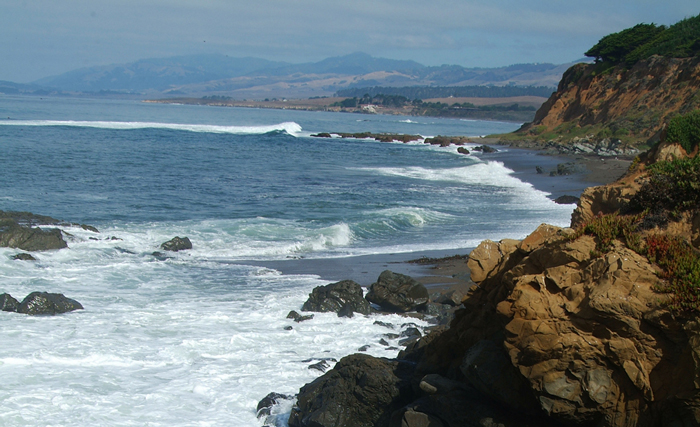

Photo and painting by Karen Sperling
When you paint a painting from a photo, it’s a good idea to keep in mind traditional art concepts used by master landscape artists throughout the ages. These include:
1. Eliminate details
Eliminate details in the painting compared to the photo. Here’s what the original photo looked like.
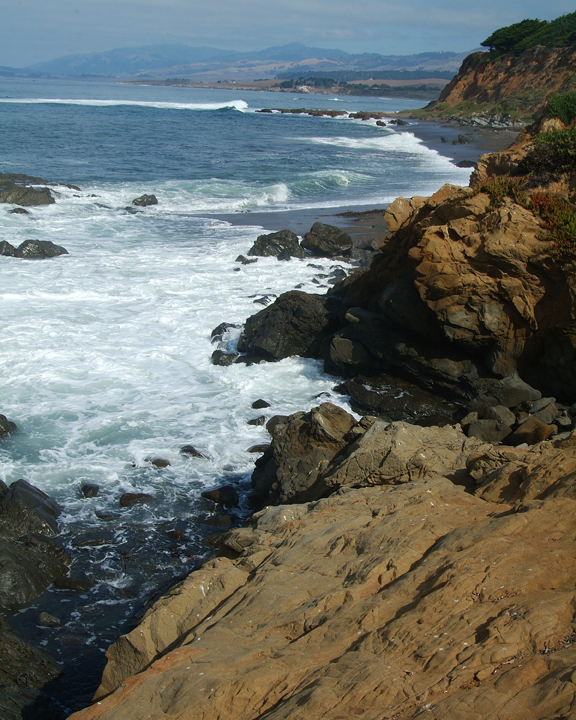
It had a lot of details, which I eliminated by cropping the photo in Photoshop.
Cropping the photo also helped with the rule of thirds, the next art concept to keep in mind.
2. Rule of Thirds
Follow the rule of thirds, which recommends that your subject falls on the imaginary folds if the canvas were folded in thirds.
After the photo was cropped, the rocks in front fell approximately on the intersection of the imaginary folds, represented by the blue circles, becoming the clear subject.
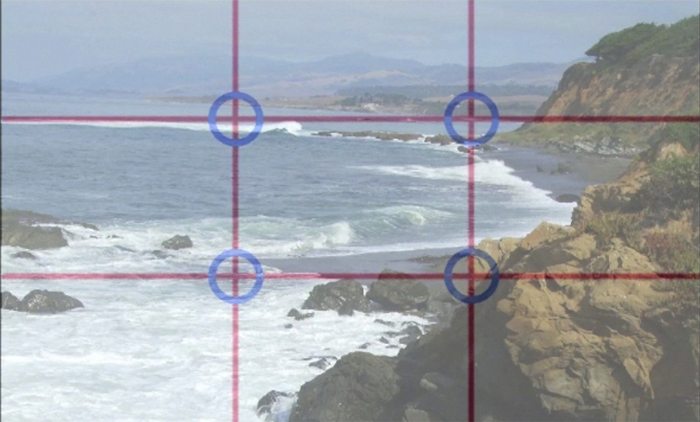
3. Choose a color scheme
One of the differences between a photo and a painting is that a painting has a chosen color scheme. I chose a color scheme by opening the photo in Painter and looking at it next to a color wheel. I decided to use an adjacent color scheme, using colors next to each other from red-orange to blue-green on the color wheel.
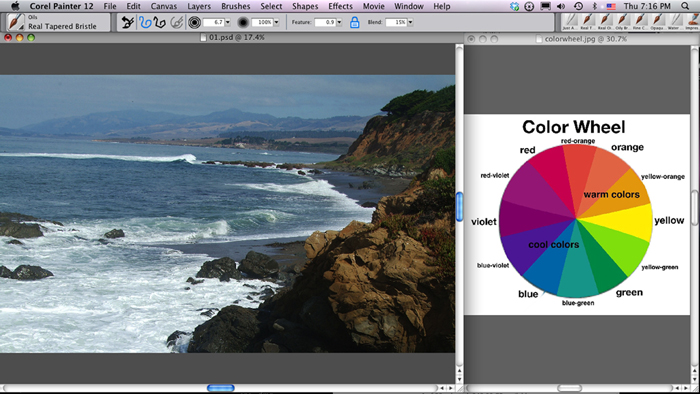
In Painter, I chose File: Quick Clone. This created a copy, or clone, of the photo and deleted the contents of the copy so that I had a blank canvas to paint on. By cloning the photo, I set up Painter to allow me to turn on Tracing Paper, which lets me see a 50 percent non-printing ghost of the photo. I press “command” on Mac, or “Ctrl” on Windows and type a “T” to turn on Tracing Paper. Repeat to turn off Tracing Paper.
I chose the Oils brush category and the Real Oils Smeary variant. I chose a shade of burnt sienna, or brown, in the Colors palette. I began to paint, creating a tonal painting, which is a traditional art technique to show the areas of light and dark to use as a guideline for colors later. Lift and paint to paint darker tones; scribble to paint lighter ones.
Adjust the Size slider in the Property Bar to change the width of brushstrokes.
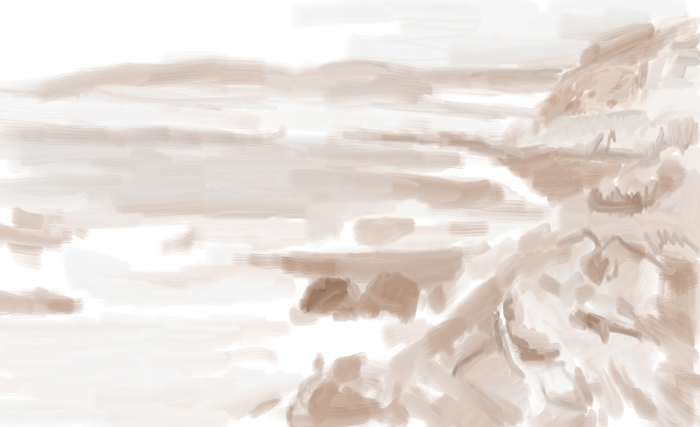
Next I started adding color using the same brush.
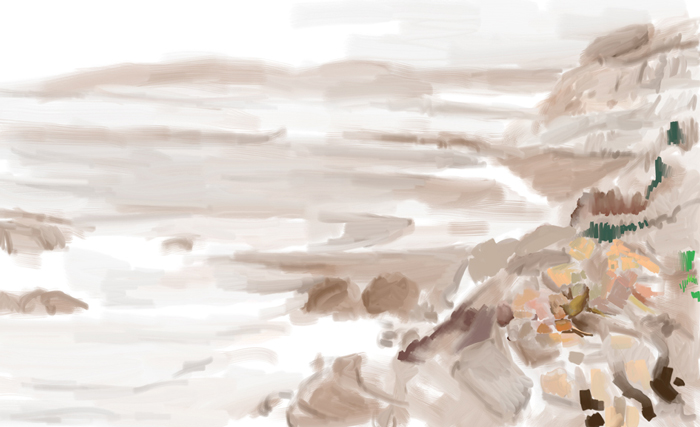
At this point, I used four variants of the Oils brush category and painted the rocks in the foreground, the plants and the shoreline in the background.
I outlined with the Fine Camel variant, made distinct brushstrokes with the Real Tapered Bristle, painted smooth oily strokes with the Oily Bristle and blended in places with the Real Oils Smeary variant. I also blended with the Blenders Just Add Water variant a little, but I didn’t blend a lot because I wanted the brushstrokes to be visible.
Here you see the rocks at various stages in the painting from left to right, including the final, all the way to the right.
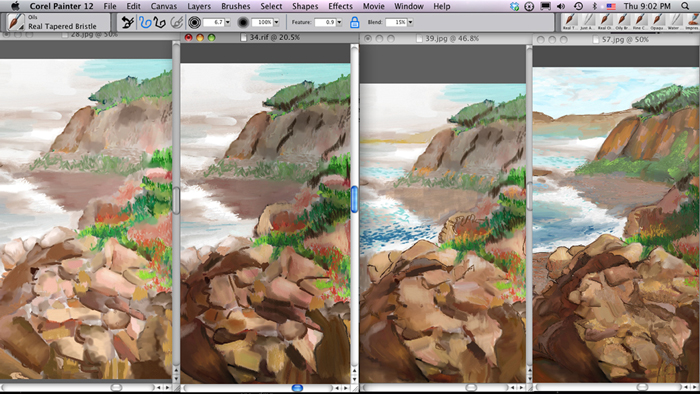
I was playing around less with the brushstrokes and more with getting the highlights, mid-tones and shadows right, based on the photo, and using the colors in my adjacent color scheme.
I used the Artists Impressionist variant to paint the water. I blocked in areas of color, and I put in lines of light and dark based on where I saw highlights and shadows in the photo by lowering the Jitter slider in the Property Bar and painting.
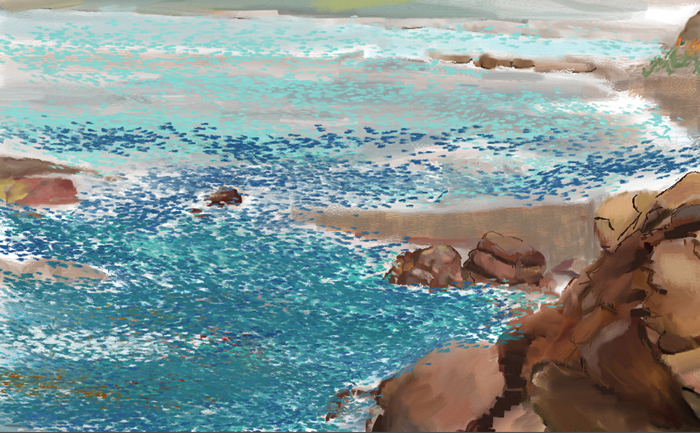
Then I blended in places with the Blenders Water Rake.
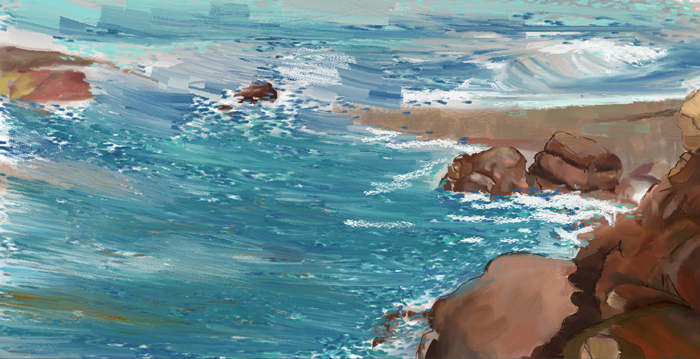
And that’s how I turned a landscape photo into a painting in Corel Painter!
Karen Sperling is the original Corel Painter expert. She wrote the software program’s first several manuals and several published books, including the current bestselling Painting for Photographers, which is available at her web site http://artistrymag.com/ along with her Painting for Photographers DVD’s for painting portraits and landscapes from photos. Karen Sperling has exhibited her fine art in New York and during Art Basel Miami. Her art and commissioned portraits are held in private collections around the world and are available through her web site http://karensperling.com/.
Was this article helpful?
Tell us how we can improve it.